Key takeaways:
- Student engagement is enhanced by fostering a supportive and collaborative environment, allowing students to feel valued and heard.
- Incorporating choice and personalization in assignments significantly boosts students’ motivation and investment in their learning process.
- Effective assessment strategies, such as project-based learning and peer review, can deepen understanding and build camaraderie among students.
- Utilizing technology in assessments can transform student engagement, making the learning experience more interactive and enjoyable.
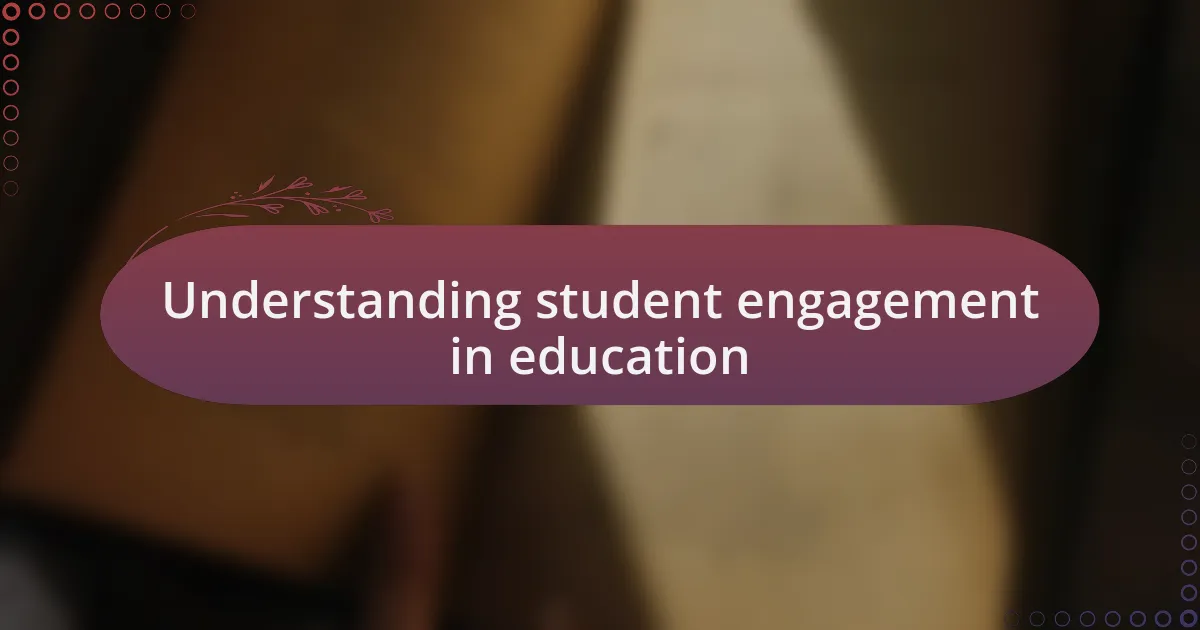
Understanding student engagement in education
Engagement in education goes beyond just attendance; it taps into the emotional and cognitive involvement of students. I recall a moment in my own teaching where a student, previously disengaged, lit up during a group project. It made me wonder, what exactly ignited that spark? It wasn’t just the task itself; it was the collaborative atmosphere that made them feel valued.
Think about it: when students feel that their opinions matter, they are more likely to invest themselves in their learning journey. I’ve noticed that offering choices in assignments can truly change the game. One particular student chose a topic related to their personal interests, and it transformed their work from average to exceptional. Isn’t it fascinating how a little autonomy can lead to such profound outcomes?
Moreover, understanding engagement means recognizing that students come from diverse backgrounds and have varying motivations. I once had a conversation with a student who revealed that their struggles at home affected their focus in class. This insight made me realize that fostering a supportive environment could enhance engagement significantly. How can we, as educators, better address those underlying factors? Exploring these connections could open doors to deeper learning experiences for our students.
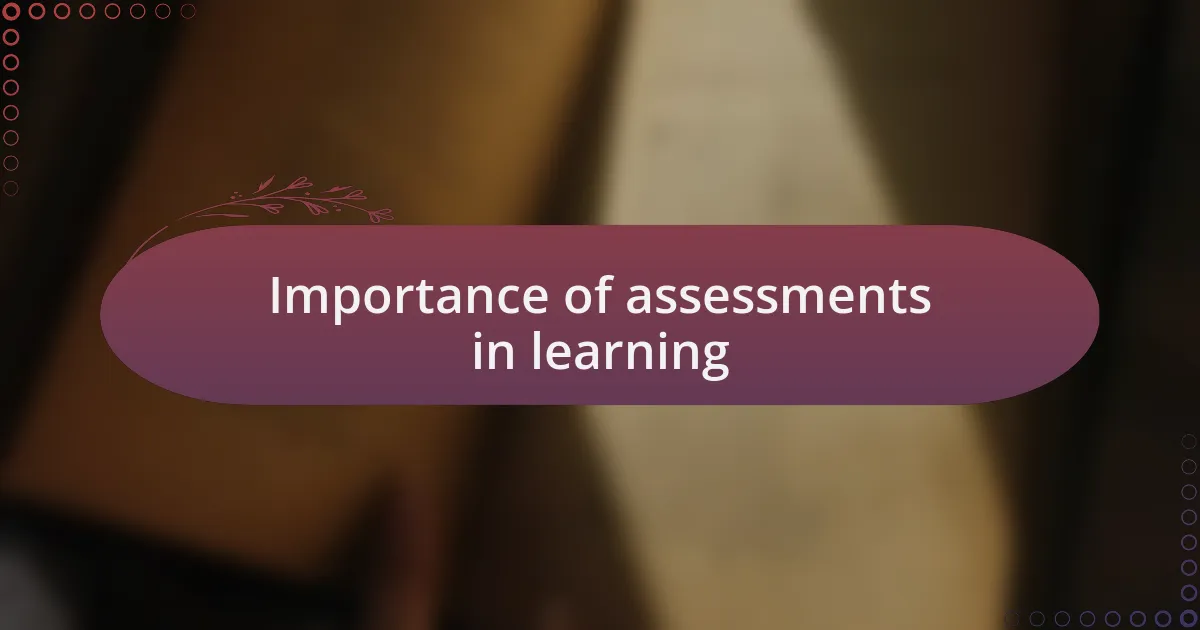
Importance of assessments in learning
Assessments play a crucial role in the learning process as they provide a structured way to evaluate student understanding. I remember administering a quiz that seemed straightforward, yet the varied responses revealed deeper insights into my students’ grasp of the material. It made me reflect: are assessments just tests, or are they key indicators of how well we’re facilitating learning?
Beyond simply measuring knowledge, assessments can spark motivation and drive progress. With one of my classes, I incorporated project-based assessments that allowed students to demonstrate their learning creatively. Witnessing the excitement in their eyes when they presented their projects was a reminder that assessments, when done right, can be a celebration of their learning journey.
Moreover, assessments inform instruction and guide teachers in tailoring their approaches. I’ve learned to trust the data from formative assessments; they tell me where my students are struggling and where they excel. This feedback loop is invaluable—it’s like having a compass that directs my teaching strategies, ensuring that I meet my students where they are. Isn’t it enlightening how assessments can shift our perspective on teaching effectiveness?
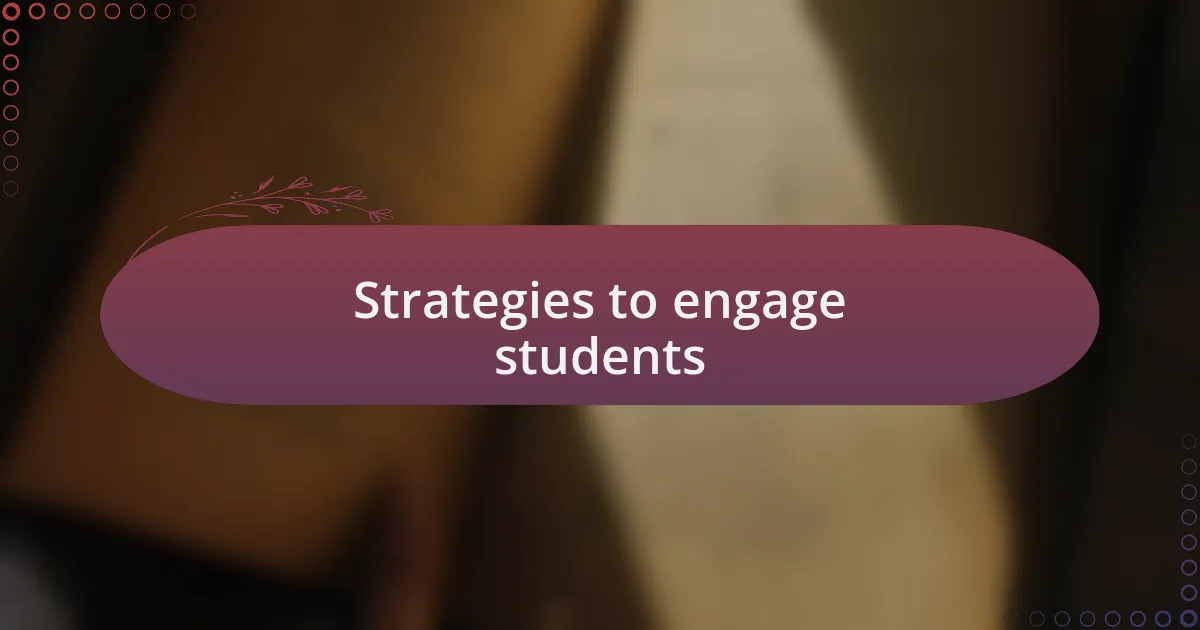
Strategies to engage students
Engaging students in assessments is all about tapping into their interests and making the process feel relevant. For instance, I once organized a themed assessment day where students chose topics they were passionate about. The energy in the room was contagious; students were not only excited to share their knowledge but also to learn from each other. Have you ever noticed how much more motivated students can be when they feel a personal connection to what they’re doing?
Another strategy that worked wonders for me was incorporating technology and gamification into assessments. I created an interactive quiz using an app that allowed students to compete in teams. Watching their competitive spirits ignite brought a whole new level of enthusiasm. How often do we see students so engaged that they forget they’re being assessed? It’s incredible how the right tools can transform traditional assessments into enjoyable learning experiences.
I also found that providing opportunities for self-assessment empowers students to take ownership of their learning. I encouraged my students to reflect on their own progress through journals, allowing them to express their thoughts and feelings about their learning journey. This approach fostered deeper connections to the content, and I saw their confidence blossom. Isn’t it fascinating how giving students a voice in their assessment process can lead to greater engagement and accountability?
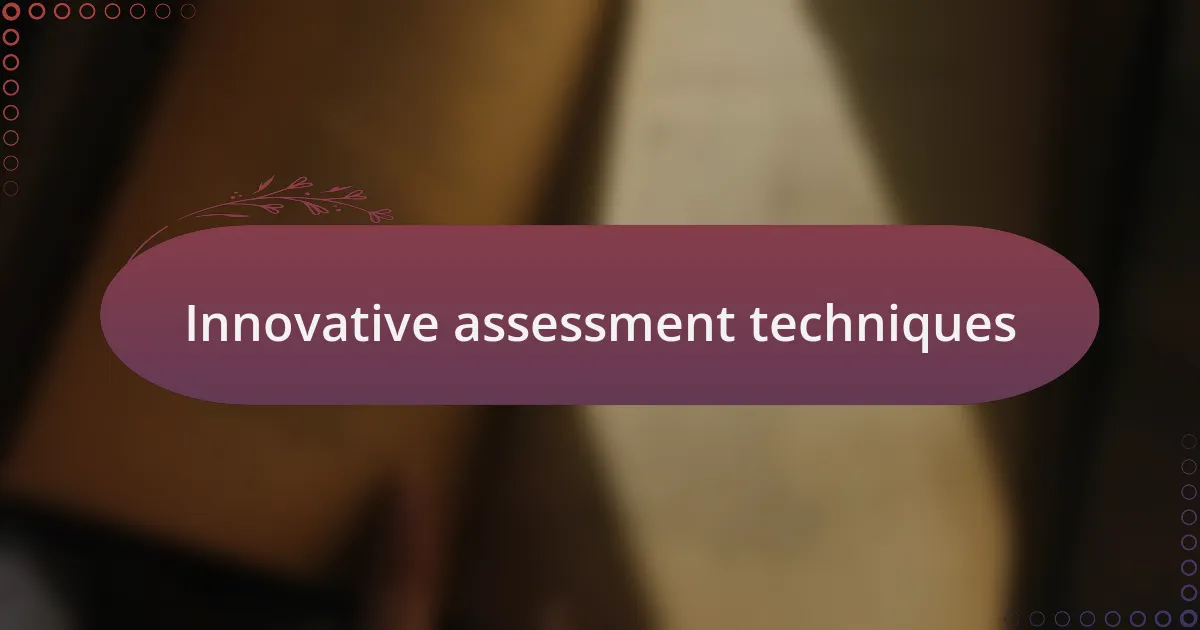
Innovative assessment techniques
One innovative assessment technique I implemented involved project-based learning, where students undertook real-world challenges. They collaborated in groups to develop solutions for issues within our community, which made the assessments highly relevant and personal. It was rewarding to see how their excitement soared when they discovered the impact of their work outside the classroom—have you ever witnessed students take pride in making a difference?
Another technique I found incredibly effective was using peer assessment. I assigned students to review and provide constructive feedback on each other’s work, which not only encouraged critical thinking but also fostered a sense of camaraderie. This shift allowed them to learn from one another, and sometimes, their peers offered insights that I, as the teacher, might have overlooked. Isn’t it amazing how learning can become more enriching when students teach and support one another?
Lastly, I experimented with incorporating visual and creative expression into assessments. For one project, students created visual stories to convey their understanding of a complex topic, bringing a layer of creativity to the evaluation process. Watching them express their ideas through art was truly eye-opening—how often do we underestimate the power of creativity in learning? This method deepened their comprehension while tapping into their artistic skills, making assessments a more holistic experience.
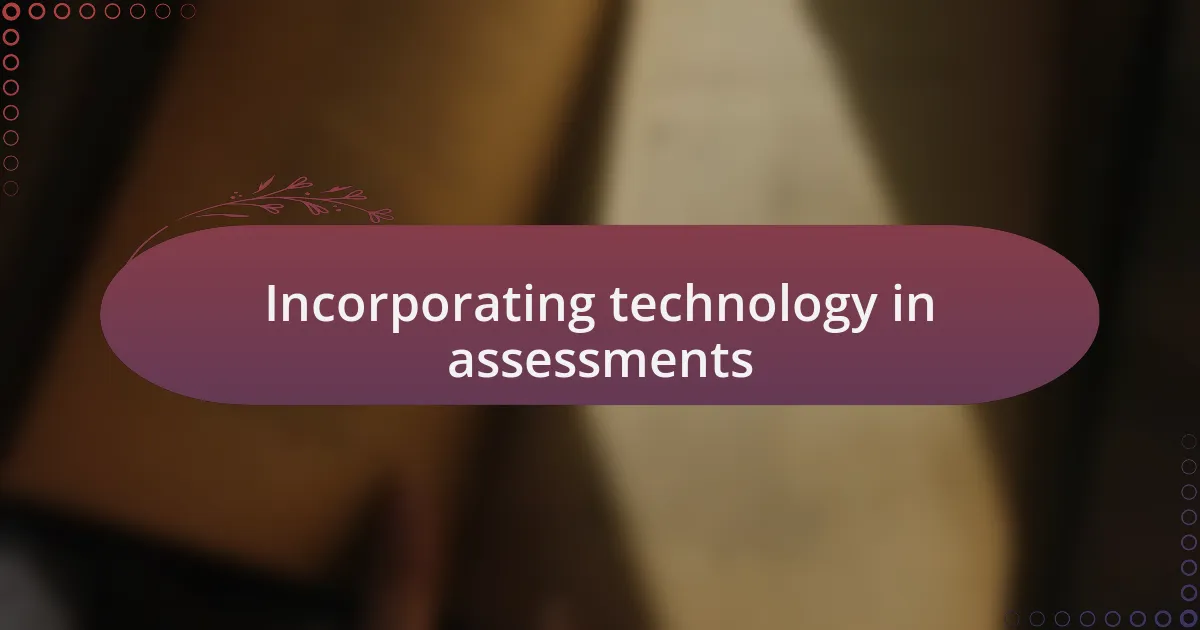
Incorporating technology in assessments
In my experience, incorporating technology in assessments can truly transform how students engage with their learning. For instance, I started using online quizzes and interactive platforms like Kahoot! which allowed students to compete in a game-like environment during assessments. The energy in the room changed dramatically—have you ever seen a group of students lean forward, excitedly waiting for the next question to pop up on screen?
Additionally, I discovered the power of multimedia projects through digital storytelling tools. This allowed students to blend their research with videos, images, and sound, creating presentations that were both informative and captivating. I remember one student who shared their project on local history—a piece that included interviews with community members. Watching their classmates react with genuine interest was a proud moment for me, reminding me how technology can bridge gaps and make assessments more engaging.
I also implemented e-portfolios where students could showcase their work over time. This not only provided a platform for self-reflection but allowed them to track their own progress. It was incredible to see a shy student blossom as they took ownership of their learning journey. How often do we create spaces for students to reflect on their growth in such a tangible way? This approach nurtured a sense of responsibility and pride, encouraging them to push their boundaries even further.
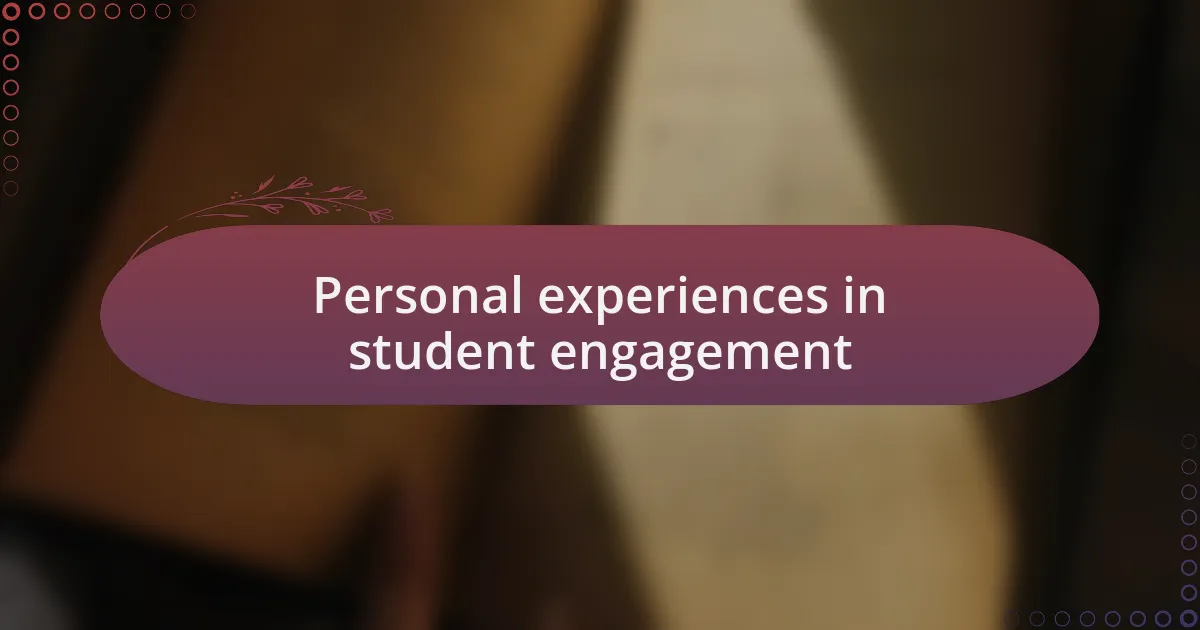
Personal experiences in student engagement
One memorable experience I had was implementing peer assessments in a literature class. Students were tasked with reviewing each other’s essays, which not only gave them a chance to provide constructive feedback but also helped them learn from one another. I could see their confidence grow as they realized their opinions mattered. Do you remember the first time someone valued your input? That was how they felt, and it was infectious.
In another instance, I introduced small group discussions before a major project. I paired students who had different perspectives, which sparked lively debates and discussions. The energy was palpable, and I could see the excitement on their faces as they shared ideas. It made me wonder—how often do we create environments that foster such rich dialogue? Watching them engage so deeply with each other amplified their enthusiasm for the subject matter.
Lastly, I remember organizing a “Student Choice Day,” where learners could select any topic for a short presentation. The buzz in the classroom was unlike anything I’ve seen before. It reminded me how powerful it is to give students autonomy—when they’re passionate about what they’re presenting, they shine. Isn’t it fascinating to see how choice can drive engagement? Seeing their creativity flow was truly one of my most rewarding experiences as an educator.
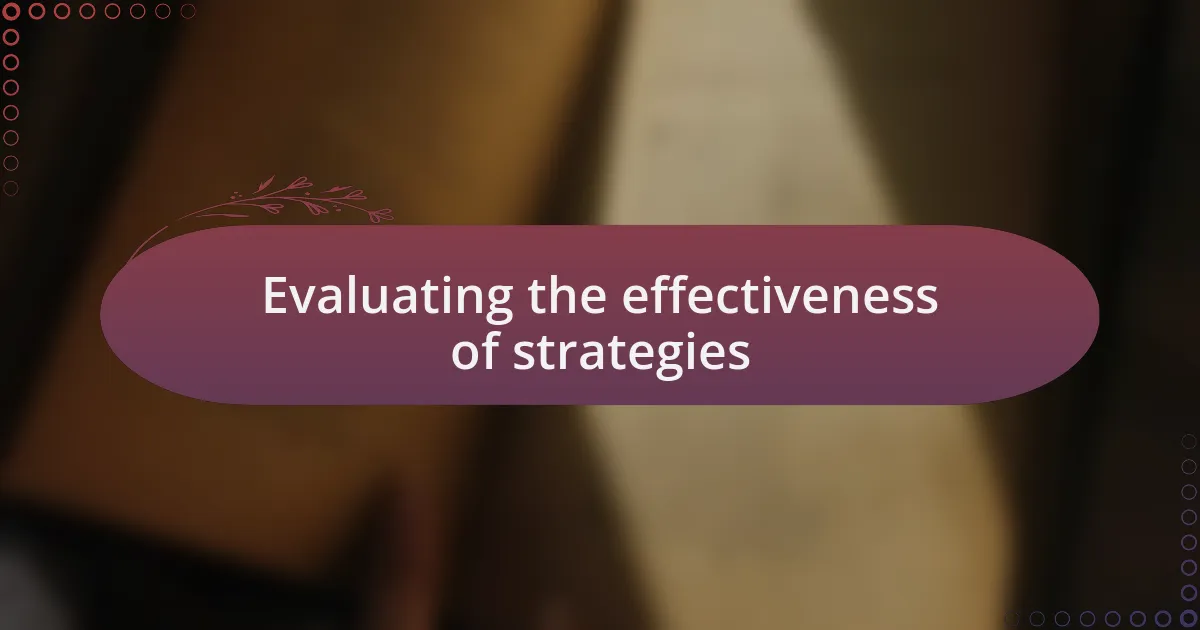
Evaluating the effectiveness of strategies
Evaluating the effectiveness of my engagement strategies often comes down to observing student reactions and performance. For instance, after implementing those peer assessments, I noticed a significant improvement in their writing skills over the semester. I couldn’t help but think—how much of that was due to their newfound confidence in critiquing their peers? It was evident that when students actively participated in the learning process, the quality of their work improved.
In another instance, after the small group discussions, I gathered feedback from my students. Many expressed how the interactions deepened their understanding of the material and made them feel more connected to their classmates. I found myself reflecting on this: Are we as educators aware of how impactful our classroom dynamics can be? The positive feedback reinforced my belief that creating space for conversation fosters not just learning but also lifelong relationships among learners.
Lastly, evaluating Student Choice Day was a true eye-opener. I asked students to share how it felt to present about something they loved. Their excitement was palpable, and several mentioned that it made them feel like real experts. How often do we give our students a platform to showcase their passions? This experience taught me that when students feel a personal connection to their assessments, engagement naturally follows, and the impact is often more profound than we realize.